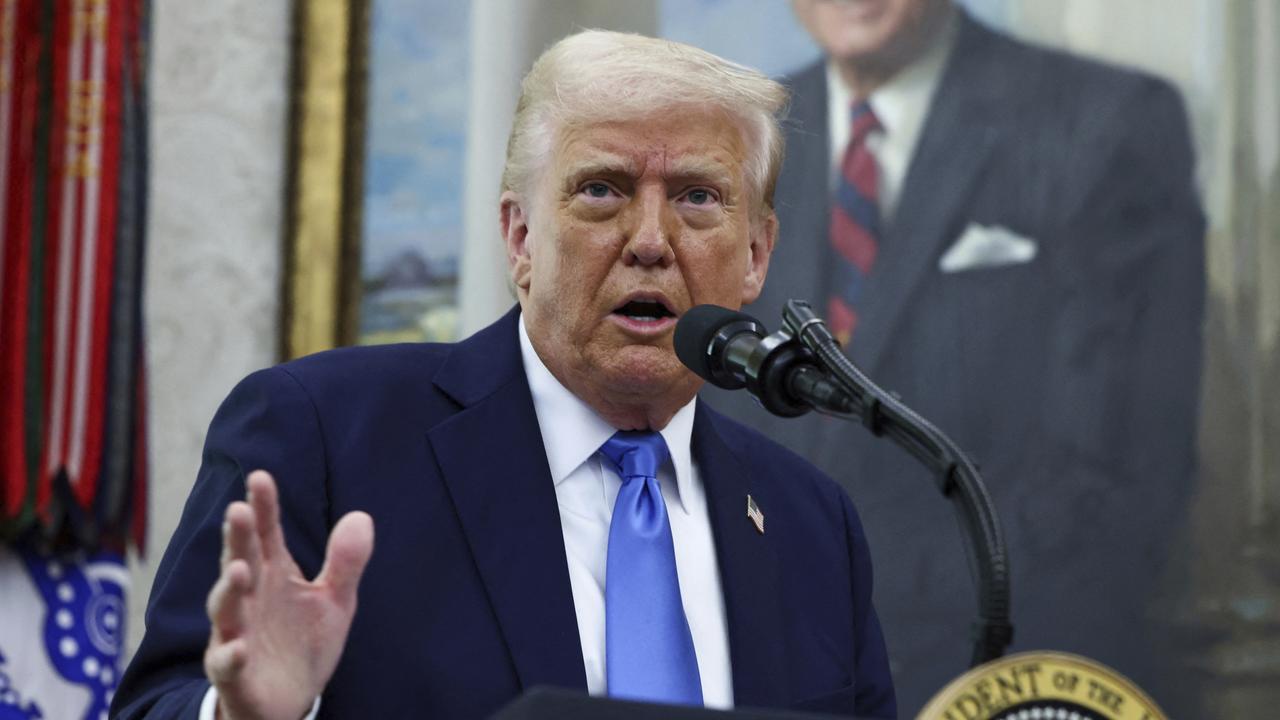Bitcoin ETFs flip to inflows ahead of Trump’s Liberation Day
The Bitcoin ETFs flip to inflows just ahead of President Trump’s Liberation Day tariffs, marking a notable shift in market sentiment. After a three-day losing streak, during which more than $320 million flowed out of spot Bitcoin ETFs, there was a significant reversal on April 2. According to data from SoSoValue, the 12 spot Bitcoin ETFs tracked by the firm saw net inflows of $220.76 million, signaling a renewed interest in Bitcoin and related exchange-traded funds.
This shift comes at a critical time, with Trump’s tariffs set to introduce a wave of economic uncertainty. However, Bitcoin’s positive reaction to these changes has caught the attention of investors, leading to the influx of capital back into Bitcoin ETFs. Let’s take a closer look at the factors behind this rebound and what it could mean for the future of Bitcoin and its market trajectory.
Bitcoin ETFs Flip to Inflows: A Turnaround After a Losing Streak
The recent flip to inflows for Bitcoin ETFs came after a period of negative performance, which saw a three-day outflow streak where over $320 million left the market. This reversal in sentiment is noteworthy as it demonstrates a renewed interest in Bitcoin, even in the face of uncertainty and market volatility.
The inflows on April 2 were substantial, reaching $220.76 million, suggesting that investors are finding value in Bitcoin-related assets despite broader economic concerns. ARK 21Shares’ ARKB and Fidelity’s FBTC were the largest beneficiaries of these inflows, bringing in $130.15 million and $118.79 million, respectively. These two funds had previously experienced outflows on the day before, but the influx of capital shows that market sentiment can quickly change, especially when there are positive developments in the cryptocurrency space.
Alongside these significant funds, Grayscale’s mini Bitcoin Trust and Bitwise’s BITB also experienced inflows of $34.28 million and $33.38 million, respectively. These inflows indicate that Bitcoin ETFs, particularly those from well-established players, are attracting renewed interest. However, not all funds saw positive inflows. BlackRock’s IBIT, the largest asset manager by net assets, experienced its first outflow in the past three weeks, with $115.87 million in redemptions. This was a noteworthy exception to the trend, indicating that some investors might be taking a more cautious approach amid the broader market instability.

A Surge in Bitcoin ETFs’ Trading Volume
In addition to the net inflows, total trading volume across all Bitcoin ETFs hit $2.51 billion on April 2, showing a surge in activity and interest. Since their launch, these Bitcoin ETFs have collectively brought in $36.24 billion in net inflows, further highlighting the growing interest in Bitcoin as an investment asset. This surge in trading volume and net inflows indicates that despite the recent volatility, institutional investors and traders are still confident in the long-term potential of Bitcoin and are increasing their exposure to the cryptocurrency through ETFs.

Bitcoin’s Resilience Amid Trump’s Tariffs
Bitcoin’s price bounced back by 3.6% to around $87,100 after dipping earlier in the day, coinciding with the announcement of Trump’s new tariffs. While tariffs and trade wars can create significant uncertainty in global markets, some analysts believe this situation could ultimately benefit Bitcoin. President Trump’s “Liberation Day” tariffs introduced a 10% flat tariff on all imports, with even higher rates for key trading partners like China, the European Union, and Japan. These trade tensions have led to a degree of market anxiety, with both traditional financial markets and the crypto market reacting to the uncertainty.
Despite this initial shock, Arthur Hayes, co-founder of BitMEX, pointed out that Bitcoin could ultimately weather the storm, provided that it stays above the $76,500 level through U.S. tax day on April 15. Hayes suggested that the current dip was likely a short-term reaction and that as long as Bitcoin holds above $76,500, it should be in a good position for recovery. He also cautioned traders to stay alert to avoid being caught in the market’s wild swings.
The Role of Bitcoin ETFs in Institutional Adoption
One of the key factors driving the recent inflows into Bitcoin ETFs is the continued rise of institutional adoption. Bitcoin ETFs provide institutional investors with a way to gain exposure to Bitcoin without the need to hold the underlying asset directly. This is particularly appealing for institutions that are looking to invest in Bitcoin but are wary of the technical challenges associated with storing and managing the cryptocurrency securely.
The increased institutional demand for Bitcoin is helping to drive the flip to inflows in Bitcoin ETFs. As institutional investors allocate more capital to Bitcoin through ETFs, the cryptocurrency is likely to experience less volatility, making it a more attractive option for long-term investors. This could provide significant support for Bitcoin’s price in the coming months, especially as the market absorbs the impact of Trump’s tariffs and the broader economic challenges.

The Future of Bitcoin ETFs: What Comes Next?
With Bitcoin ETFs flipping to inflows, the future for these funds looks promising. The increased interest from both retail and institutional investors suggests that the demand for Bitcoin and cryptocurrency-related investment products is on the rise. While the market is still susceptible to volatility and macroeconomic factors, such as Trump’s trade tariffs, the long-term outlook for Bitcoin remains positive, driven by the growing acceptance of digital assets in mainstream finance.
The success of Bitcoin ETFs will largely depend on the continued development of the cryptocurrency market, regulatory clarity, and institutional confidence. If Bitcoin continues to prove itself as a store of value and an attractive hedge against inflation, ETFs that track Bitcoin could see even more substantial inflows. Additionally, Bitcoin ETFs could become a crucial bridge between the traditional financial system and the rapidly growing world of digital assets.

Conclusion: Will Bitcoin ETFs Continue to Attract Inflows?
In conclusion, Bitcoin ETFs flip to inflows amid the announcement of Trump’s Liberation Day tariffs, signaling a positive shift in market sentiment. Despite the challenges posed by global trade tensions and economic uncertainty, Bitcoin remains resilient, with institutional investors increasingly turning to Bitcoin ETFs for exposure to the digital asset. The net inflows of $220.76 million into Bitcoin ETFs reflect growing confidence in the cryptocurrency’s long-term potential.
While the market remains volatile, the positive inflows into Bitcoin ETFs indicate that Bitcoin’s role as a store of value is gaining traction. As the cryptocurrency space continues to evolve and gain acceptance among institutional investors, the future of Bitcoin ETFs looks bright, with the potential for further growth in inflows and trading volume. For now, Bitcoin’s price remains closely tied to broader economic developments, but its resilience in the face of adversity suggests that it will continue to play a major role in the future of digital finance.


